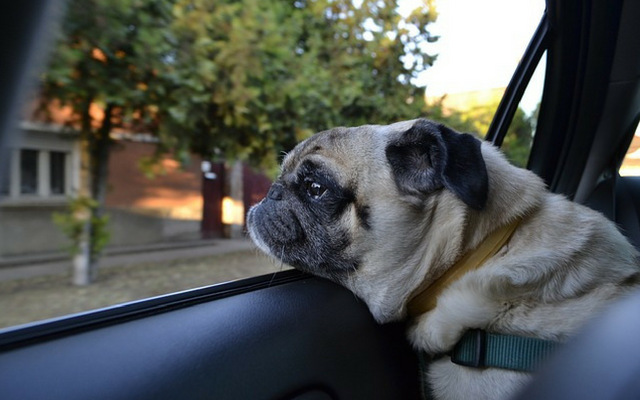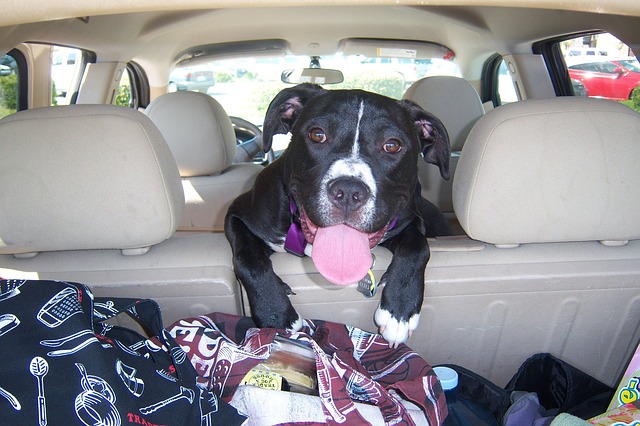Every summer, dog owners say things like, “I’ll only be a minute,” and, “It’s okay as long as the window is cracked.” They go on to leave their pets trapped in their vehicles while the temperature climbs. When it’s 70°F outside, the temperature inside a parked car can reach 113°F in only a half-hour.
Thousands of dogs a year suffer from heatstroke, and many die because their owners don’t fully understand the dangers of a hot car. Many states have enacted laws in an attempt to spread awareness and protect pets, but it doesn’t stop it from happening. You can be a part of a positive change by taking action when you see a dog trapped in a hot car.

1. Gather Information
As you approach the vehicle, take note of its color, make, and model. You also want to either write down or memorize the license plate number. If you have your phone on you, take a picture.
While you’re taking notes on the car, look in the window and evaluate the dog’s condition. Brachycephalic dog breeds, like Pugs, Boxers, and Shih Tzus, are especially susceptible to heat because of their short snouts. If you find one of these dogs in a hot car, you need to act especially fast. Regardless of the dog’s breed, their apparent condition will play a role in what you do next.
2. Alert Others
As long as the dog isn’t showing signs of immediate and life-threatening danger (excessive panting, drooling, appearing to be unresponsive), your next step should be to try and find the owner of the vehicle. Remember, however, the temperature inside a car climbs quickly, and it only takes a few minutes of extreme heat for a dog’s life to be in danger.
If the car is parked in a parking lot, head to the nearest building and talk to the manager. Ask them to make an announcement calling the vehicle’s owner. If there are other people around, ask them if they recognize the car or the dog.

3. Call the Authorities
If you can’t find the owner, it’s time to call for backup. You can call either the local police or animal control. It’s best to keep these phone numbers programmed into your phone so you don’t waste time looking them up. Relay important information to the dispatcher including the car’s exact location and the status of the dog. The person you speak with might offer instructions on what to do next based on their estimated time of arrival.
4. Know Your Rights
Above all, your goal is to save a life. If you can’t find the vehicle’s owner and animal control can’t respond soon enough, you have to decide if you’re willing to do what it takes to get that dog out of the car. Breaking into a car to save a suffering animal is a good deed, but there are also risks of legal repercussions. In many states, breaking into a vehicle for any reason is a crime. The good news is, improved awareness about the dangers of hot cars is gradually changing laws across the country.
There are eight states, including Arizona, California, Florida, and Colorado, that have “Good Samaritan” laws to protect private citizens. They allow animal advocates to break into vehicles to save animals as long as certain conditions are met. Many more states have “hot car” laws that make it illegal to endanger an animal by leaving them in a parked car. You’ll likely only have a minute to weigh your options and make your decision. Read this article for an easy rundown of the laws in your state.

5. Stick Around
Whether you find the owners, decide to wait for help, or are forced to take emergency action, stick around to make sure the dog is okay. Once they’re out of the car, move them to an air conditioned building or a shady area outside. If they seem overheated, place wet towels over their neck and under their armpits, and wet their ears and paw pads.
Save most of your water for the dog to drink. Don’t force it down their throat, but encourage them to hydrate by wetting their tongue. It’s tempting to hand them ice cubes to eat, but a drastic change in body temperature could send them into shock. Cool them down slowly and skip the ice. They should also be seen by a vet as soon as possible.
6. Spread Awareness
Dogs dying in hot cars is 100% avoidable. There will always be people who leave their dogs in the car for selfish reasons despite knowing the risks, but there are also caring dog owners that simply don’t know the facts. They don’t realize that leaving the window cracked does nothing to stimulate airflow within the car, and they underestimate exactly how hot 100 degrees Fahrenheit feels to animal wearing a fur coat. Talk to the owner of the vehicle about the risks they took and how they can make a better decision next time.
With no voices of their own, it’s up to animal advocates like you to speak up for dogs in danger. The more people who know about the dangers of hot cars, the more lives we can save.
 Toledo, United States.
Toledo, United States.